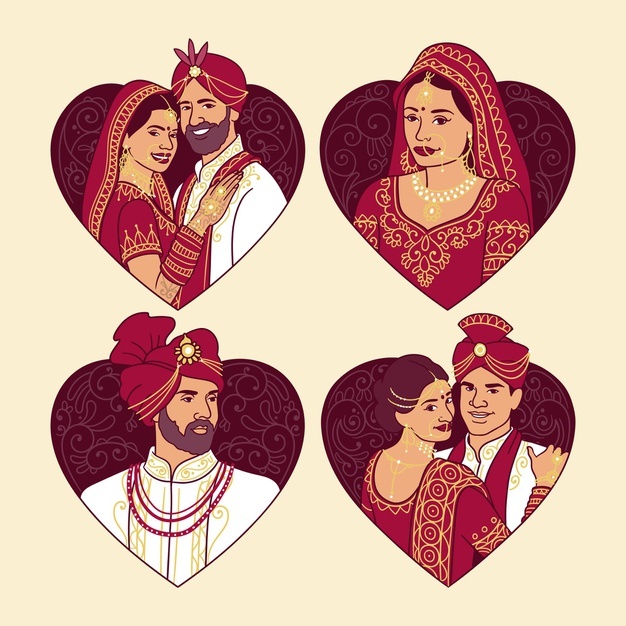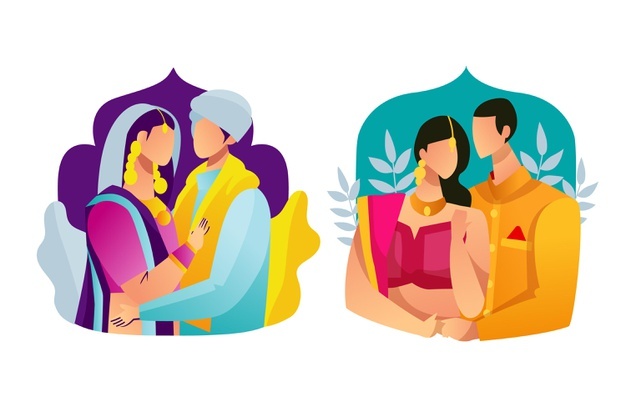America is a large, diverse country, and there is no "normal" or "correct" way to have a wedding. Traditions vary based on the couples' origins, religions, ethnicities, cultures, lifestyles, and preferences. You can find couples across the country adhering to ancient traditions or making up their own as they go along, leaving their own stamp on weddings.
Still, there are some time-honored traditions that a majority of American couples still perform. For example, a wedding cake and a first dance still feel like staples of most weddings. The majority of ceremonies still have some form of processional, and most receptions end with some kind of gesture to send off the newlyweds in style.
Read More:
Write Impressive Introduction Matrimony Profile
To help us dive deeper into some of the more popular American wedding traditions, we turned to Marcy Blum, a wedding and events planner with 30 years of experience. She works with brides and grooms across the country, so she's seen what couples are up to nationally. For each tradition, she talked us through its origins, how it has evolved in modern times, and why couples still do it today.
Here are 5 of the most popular American wedding traditions.
White Wedding Dress
Long before they meet the love of their lives many girls dream of their wedding dress, and it's usually white. The white wedding dress or gown, after all, is still one of the most practiced American traditions, says Blum. "It's worn amongst almost every American bride during the wedding ceremony and or the reception."
The Wedding Party
Regardless of their culture or faith, many couples have bridesmaids and groomsmen at their wedding. "A vast majority of wedding ceremonies today have a bridal party," says Blum. "They can be seen during the processional, standing on the sides of the couple during the ceremony, and at a reception." They are also instrumental in planning wedding-related events such as bachelor and bachelorette parties.
The Wedding Processional
Most American weddings include a wedding processional, where the wedding party walks down the aisle at the beginning of the wedding ceremony. The order is generally the same: The officiant walks first followed by the wedding party and the flower girls and ring bearers. The couple and their parents are last. In more traditional ceremonies, the bride's father walks her down the aisle, while in modern ceremonies, both parents do the honors. This was another tradition started in England during a royal wedding, this time Queen Victoria's oldest child.
The First Dance
At many weddings, the first dance is one of the most anticipated events. The newlyweds make their way to the dance floor and make their debut as a married couple. While some people do a romantic slow dance others dazzle the crowd with a choreographed routine to upbeat music. This tradition is taken from Europe. During the 1700s, noblemen would throw a lavish ball, and the guest of honor—the person with the highest rank or social standing—would kick off the party with the first dance. Now it's the newlyweds that get that honor.
The Wedding Cake
At many wedding receptions, the wedding cake is the centerpiece of the evening, claims Blum. Not only is it beautifully displayed at the reception, cutting it is one of the wedding festivities. "Wedding cakes are such an important aspect of one's wedding celebration, with the tradition of two people feeding each other a bite, sometimes resulting in smushed cake on the other's face," she adds. Many couples today still have a traditional wedding cake, or they create one out of cupcakes or macarons.
This tradition dates back to ancient Rome where guests would crumble a small barley cake or a wheat scone over the bride's head to symbolize fertility and good fortune. In medieval times, merrymakers practiced another version of the tradition. "There would be a large stack of cookies and scones created that the couple would have to kiss over. If they succeeded without the tower falling, they would have good luck."


